 Sámegillii
Sámegillii  På norsk
På norsk
Articles about Sami school history
9. part - printed in Min Áigi 14.12.2007
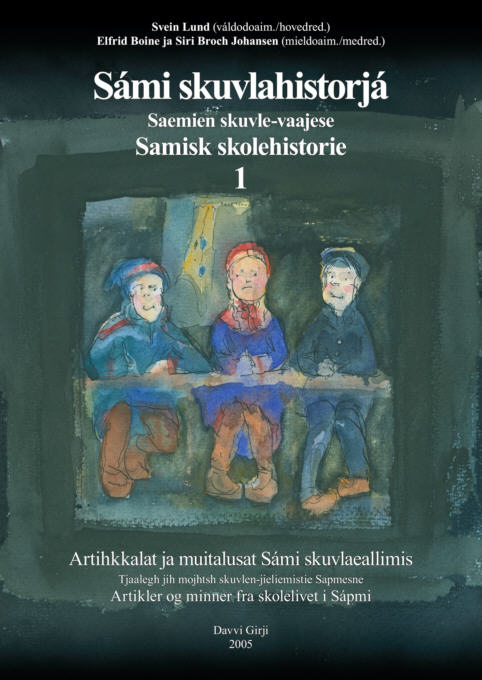 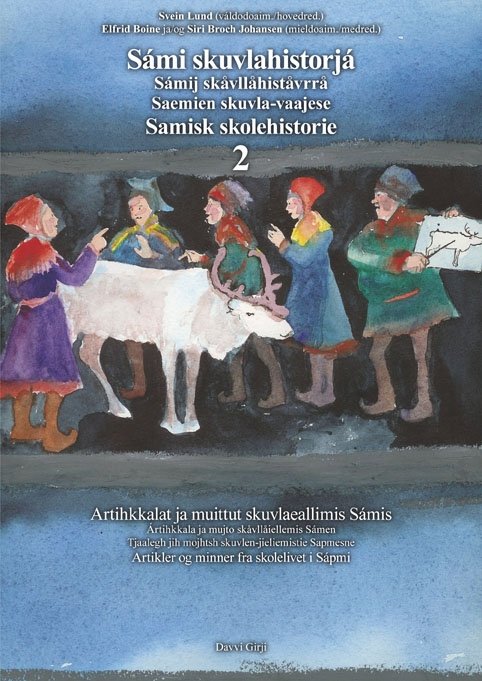 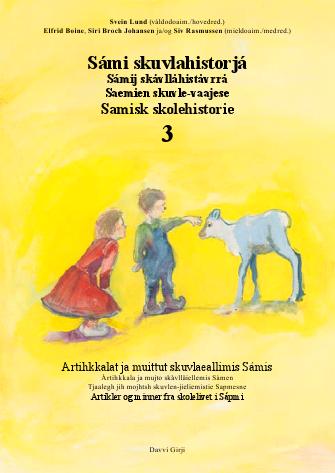 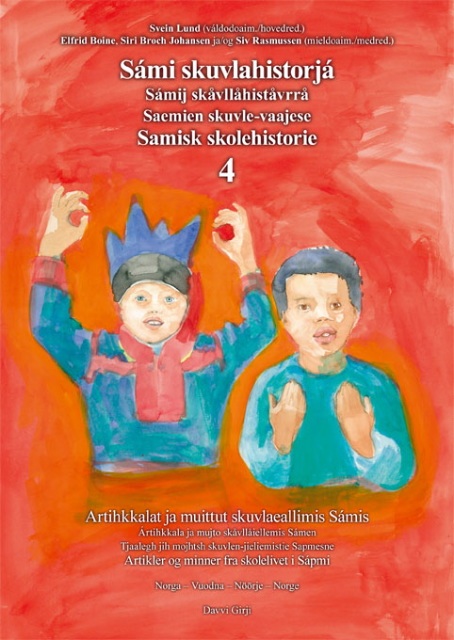 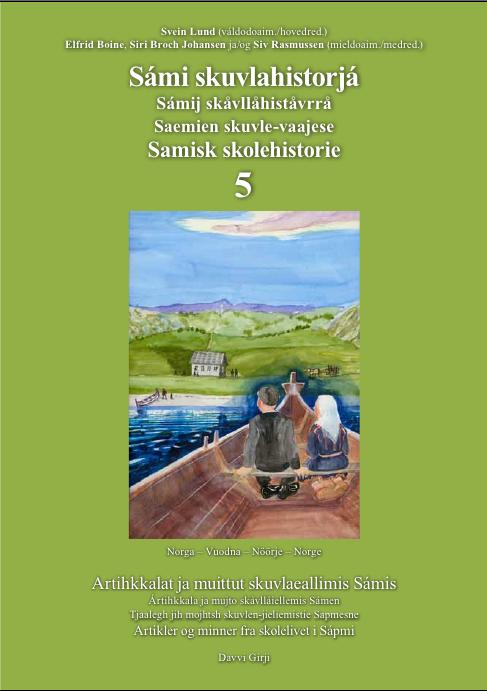
Do you know Sami school history?Sámi skuvlahistorjá / Samisk skolehistorie (Sami School History) is a series of books published by the publishing house Davvi Girji. In about 200 articles in 5 volumes there is told about the experiences of Sami children in Norwegian schools, and about the changes in the educational politics of the Norwegian authorities towards the Sami population. The books are published with parallell text in Sami and Norwegian language.In this web site some of the articles of the first book are also published in English. It would be too much to translate it all, so to make this history available to a greater public, we are translating a series of newspaper articles, which sorted by topics make a summary of stories in the books. So far there are 28 articles published in Sami language by the Sami newspapers Min Áigi and Ávvir. They are also published here in Norwegian and the English version will be published gradually as they are translated. These articles are edited by the main editor, Svein Lund. Besides him the editing board of the book series consist of Elfrid Boine, Siri Broch Johansen and Siv Rasmussen. |
The vicar suggested the following:
The school board refers to its decision in a meeting 5/11.49 in case 72/49, and considers the current teaching plan for the primary school in Karasjok as good. By the introduction of different fields of studies in upper primary school, there should be opportunities for those who wish to choose a field that provides (further) introduction in Sami language and culture. The school board considers any additional strengthening of the Sami element in the education as unnecessary and perhaps harmful....
The vicar’s proposal was passed with 8 against 2 votes
(Sami in Karasjok, SSH-2)
Then came the next attempt at school material. I assumed there could be objections, but no trouble. My little booklet of 10 pages was simply titled ‘SAMENE’ (the Sami). I had done some foundational research e.g. during district school visits. Furthermore I had knowledge of Måsøy from my father and grandfather, who fished for a living in the fjords here, and from my time in Nessby. Since upper primary school wasn’t completely established in the 1960’s, we received pupils from both Hasvik and Måsøy at the boarding school in the east county. The pupils got along nicely. I can’t remember any ethnic oppositions, but neither that someone from the west showed their true colours.
The booklet ‘SAMENE’ became something similar to a small bomb. “What in the Lords name have you created!” I was soon told by a colleague with extensive experience from working in the county. At the time there were no Sami in Måsøy. Naturally there were people of Sami lineage, even the most conditioned belonged to the mixed cocktail of Norwegian, Sami and Kven. Besides I soon heard that a good part of the inhabitants were descendants of Louis Philippe who had visited Måsøy in the middle of the 1790’s and made sure to add fresh blood to the local population. We should all know that there were a lot of posh people both at Måsøy and in other remote areas, with a family tree from both Scottish noblemen and Danish priests. Kvens, yes of course, good workers and inventors, but Sami? No!
Shouldn’t the booklet ‘SAMENE’ be prohibited? Imagine shedding such poor light on such a decent people! Should a parent’s meeting be assembled? Maybe not such a good idea right away. It might result in some pupils starting to talk to their parents about their origin. Which some had already done.
With bitter experiences from Nesseby about my own ignorance regarding the Sami in Finnmark, I had for some time told the pupils in primary school both legends, fairy tales and horror stories with Sami contents. If there are something pupils like, it is telling stories and entering the stories themselves. I therefore felt that I was on safe ground, and mostly because some of my younger colleagues deemed SAMENE appropriate. In addition my superior had approved this form of indoctrination, i.e. learning.
There was never a parent’s meeting. Instead a teachers meeting. In this meeting those who thought they knew best, set the tone. “Sami in Måsøy, such a thing has never been heard of!” Or “Yes, maybe back in the days”. There was a debate. For and against. The board was divided. The Southerners defended SAMENE, they had already used the booklet in their classes, without problems.
Venting is always needed. To my great surprise there came unexpected support from someone I went to secondary school with. We call him “John B”. He knew very well that Sami people had been living along the coast, even “in every hole in the fjord”.
There was no contested vote. There was no withdrawal of the dangerous ‘teaching material’ of a 10 page stencilled booklet. But after a while we, the teachers, could harvest several useful and interesting experiences. Pupils told us that “grandpa speaks Sami” and “auntie had a gakti as a little girl”. Long after, parents came and thanked the teachers for having cared about there being Sami within the municipality: - So deep was the fear of the Sami imbedded in us, a mother said.
(John Gustavsen's story, SSH-1)
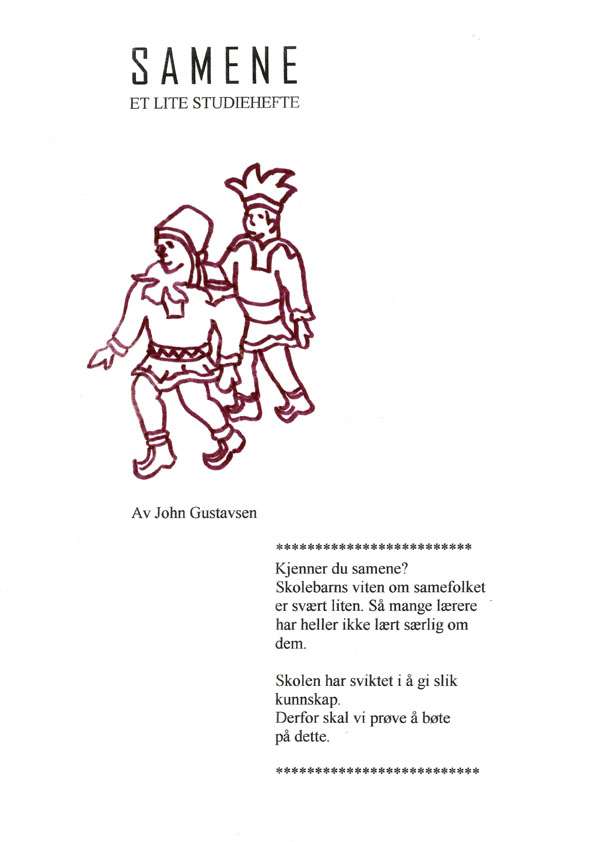 | 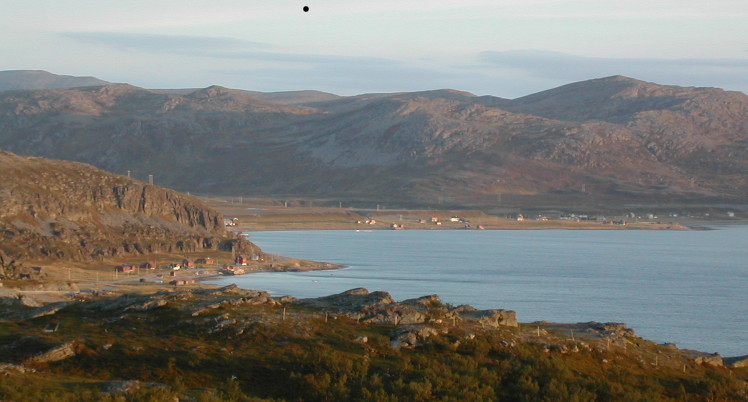 |
| “Samene” – a booklet causing much opposition in Måsøy in the 1970’s. | Snefjord in Måsøy – aren’t there any Sami living here? (Photo: Svein Lund) |
Idun Meli was a teacher in Rafsbotn, and the first to start teaching the Sami language. At first she had only one pupil and together with the pupil she had made a poster with drawings of different Sami costumes and put it up on the school wall. A journalist from the local newspaper Finnmark Dagblad then published an article with a photo of this poster, quoting Idun Meli's statement that most people in Rafsbotn had Sami blood. This provoked a hullaballoo in the village. The beautiful drawings disappeared without trace. Three boys from Rafsbotn went anonymously to the newspaper and declared, that it was not at all true that we were Samis, we did not want to be branded as such. In addition, they claimed, the first to settle in Rafsbotn, was a Dane.
- I know very well who they were, says Ruth. Two of them are my relatives, and they can not free themselves from a Sami background. One of them had a grandfather who was reindeer herding Sami from Karasjok. No, it was as if everything Sami should be washed away.Idun Meli was a teacher in Rafsbotn, and the first to start teaching the Sami language. At first she had only one pupil and together with the pupil she had made a poster with drawings of different Sami costumes and put it up on the school wall. A journalist from the local newspaper Finnmark Dagblad then published an article with a photo of this poster, quoting Idun Meli's statement that most people in Rafsbotn had Sami blood. This provoked a hullaballoo in the village. The beautiful drawings disappeared without trace. Three boys from Rafsbotn went anonymously to the newspaper and declared, that it was not at all true that we were Samis, we did not want to be branded as such. In addition, they claimed, the first to settle in Rafsbotn, was a Dane.
- I know very well who they were, says Ruth. Two of them are my relatives, and they can not free themselves from a Sami background. One of them had a grandfather who was reindeer herding Sami from Karasjok. No, it was as if everything Sami should be washed away.
(Ruth Rye Josefsen's story, SSH-1)
- I remember that one teacher named Eivind Tønnesen had allowed the pupils to write a few Sami words, says Trygve. – This resulted in the supporters of ‘norwegianisation’ bringing it up in the school board and wanted this teacher to be reprimanded. This is how tough the Norwegian assimilation policy that dominated the municipality was.
(Trygve Madsen's story, SSH-2)
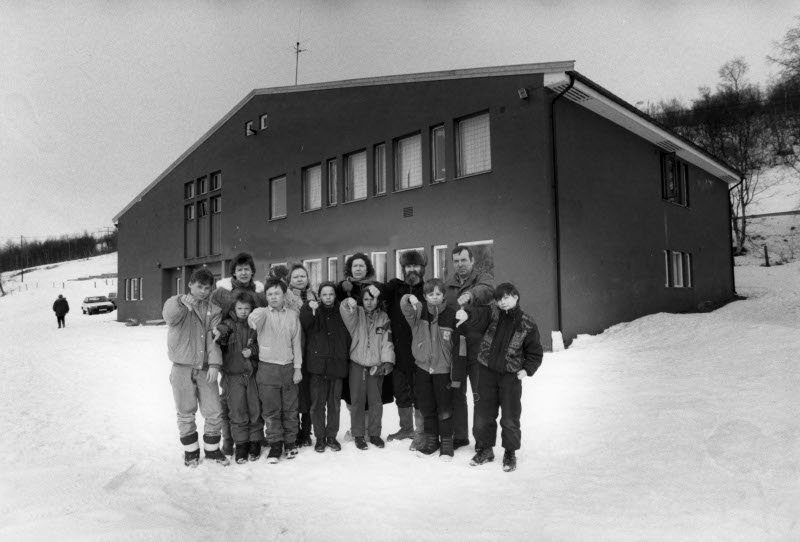 | Omkring 1970 blei Polmak internatskole revet og ny skole blei bygd ved sida. (Foto: Min Áigi) |
...
… Another time a teacher had spoken Sami to a pupil. The teacher defended himself as well as he could, he even blamed the pupil for allegedly having spoken Sami to him first, but without any luck. The completely moderate leader of the parent’s meeting was infuriated because the filthy Sami language the teacher had whispered into a pupil’s ear had found its way to his up until then pure son who had been sitting a few desks away.
(Siri Broch Johansen's story, SSH-2)
Here you find all the articles in the series:
28.09.2007 Why Sami school history?
05.10.2007 Boundless ignorance
12.10.2007 Southerner-teachers encounter the Sami language
19.10.2007 The start of Sami beginner instruction
26.10.2007 The start of education in reindeer-herding
02.11.2007 From Sami to Norwegian vocational training
16.11.2007 Struggle for Sami gymnasium
28.11.2007 School experiences of Norwegian speaking Samis
14.12.2007 Resistence against Sami language and culture
25.01.2008 A strange world
23.05.2009 On Sami teachers
30.05.2009 Life in boarding school
06.06.2009 Sami pupils were bullied
13.06.2009 Sami content in the teaching
20.06.2009 Pupil as interpreter
04.07.2009 How the children quit speaking Sami
10.09.2010 God does not understand Sami
08.10.2010 The point of view of the Norwegianizers
13.10.2010 Men of the church defending the Sami language
02.12.2010 Sami teachers in old times
09.12.2010 Boarding school life in old times
18.12.2010 Sami pupils in special schools
14.01.2012 The parents' struggle for Sami education
21.01.2012 Reluctance and absence
28.01.2012 The school during the war
04.02.2012 Reconstruction and barrack schools
11.02.2012 Curriculums - for Norwegianization and for Sami school
18.02.2012 The great struggle of the curriculum
Sami school history 1
Sami school history 2
Sami school history 3
Sami school history 4
Sami school history 5
Sami school history - main page